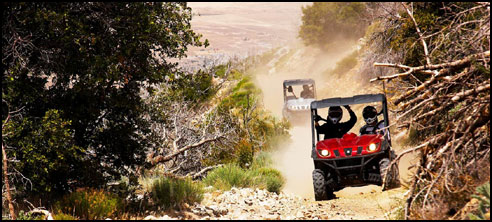To further show cooperation with the CPSC,
Yamaha included a $100 helmet incentive for
customers who viewed the Rhino’s instructional
and safety DVD in the dealership at the point
of sale or after having the CPSC repair completed.
Yamaha also issued a reminded to consumers about
its campaign to add free doors and passenger
hand holds for 660 and 450 models (the 700 includes
these items).
In reality, Yamaha could have stopped there,
but it was determined to share the truth about
its side-by-side. That’s why www.truthaboutrhino.com
was created. It’s also why members of
the off-road media were invited to a special
event held in Southern California’s San
Bernardino National Forest. We were there to
drive the updated Rhino, learn more about Yamaha’s
new Web site and its effort to combat negative
and erroneous exposure in the mainstream media.

www.truthaboutrhino.com
The Web site was created to share valid information
with consumers, media, lawyers and anyone else
who should have a question regarding the Yamaha
Rhino. The site’s objective is to present
the truth by telling visitors about the Rhino,
Yamaha’s corporate identity and involvement,
the CPSC announcement and current litigation.
Safety recommendations (in the form of rider
checklists, operator restrictions and recommended
guidelines), much like customers see in owner’s
manual and on warning labels are also afforded
ample space on the site.
To better communicate with the end user or
anyone with questions, Yamaha created a Frequently
Asked Questions (FAQ) section, and two separate
areas to showcase real-world uses. The first
is called “What People Are Saying”
and lets owners share their thoughts and opinions
about the Rhino. The second is called “Rhino
SxS In The Field” and provides examples
of the Rhino’s value to municipalities,
search-and-rescue squads and other organizations.
Finally, the site dedicates space for media
accolades and awards earned by the machine.















